Crafting Seed Bombs: Engaging Eco-Friendly Activity for Kids
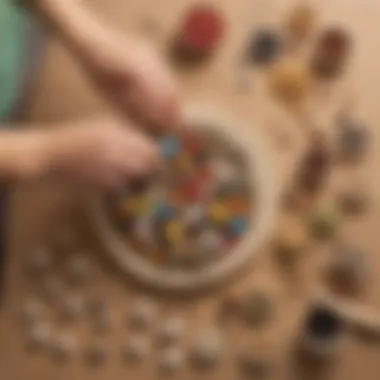

Science Fun Facts
Did you know that seed bombs have been used since the 1970s as a unique way to reseed barren areas? These clay and compost balls are designed to protect seeds while providing them with the necessary nutrients to sprout and grow. Additionally, seed bombs can be tailored with specific seed varieties to encourage biodiversity in different habitats, making them a powerful tool for environmental restoration and conservation efforts.
Discover the Wonders of Science
Engage in the fascinating process of seed selection by exploring the diversity of plant species and their unique characteristics. Learn how different seeds require specific conditions to germinate and flourish, fostering a deeper understanding of plant biology and ecosystems. Through hands-on experience, children can witness the magic of nature as they witness seeds transform into thriving plants, promoting a sense of responsibility towards the environment.
Science Quiz Time
Challenge your knowledge with interactive quizzes centered around seed types, germination processes, and environmental conservation. Test your understanding of how seed bombs contribute to the ecosystem by attracting pollinators and supporting local wildlife. Delve into brain teasers that encourage critical thinking and reinforce the importance of sustainable practices in gardening and land restoration.
Science Experiment Showcase
Embark on a thrilling journey of creating seed bombs, blending clay, compost, and various seeds into powerful ecological tools. Follow step-by-step instructions to craft the perfect seed bomb, ensuring the right seed-to-soil ratio for optimal growth. Explore the safety precautions necessary when handling materials and encourage children to wear gloves while forming the seed bombs, fostering a sense of awareness and responsibility towards gardening practices.
Introduction
In the realm of eco-conscious activities ripe for exploration by the curious minds of children, crafting seed bombs emerges as a compelling avenue. Seed bombs, also known as seed balls or earth balls, encapsulate the essence of sustainable gardening in a compact, intriguing package. This article serves as a compass, guiding young enthusiasts aged 6-12 through the gratifying process of creating these botanical grenades. By immersing in the world of seed bombs, children not only unearth the joys of hands-on creativity but also sow the seeds of ecological stewardship from an early age.
What Are Seed Bombs?
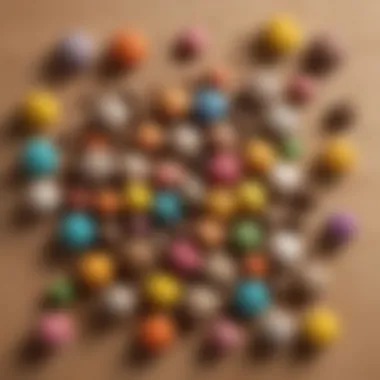

Seed bombs, in their simplest form, are clusters of seeds encased within a mixture of clay, compost, and water. These small spheres harbor the potential to sprout new life when dispersed in suitable environments. The concept of seed bombs traces its roots back to ancient times, with variations developed by indigenous communities worldwide to green barren landscapes efficiently. The modern-day revival of seed bombs echoes this ethos, offering a fun and impactful way to engage with nature and promote biodiversity. As children delve into the realm of seed bombs, they encounter a fusion of art and science, witnessing firsthand the power of tiny seeds to foster thriving ecosystems.
Benefits of Making Seed Bombs
Crafting seed bombs transcends mere creative expression; it instills a profound sense of environmental responsibility in young minds. One of the notable benefits lies in the hands-on learning experience that seed bomb making provides. By selecting and combining different seeds, children gain insights into plant varieties and their unique growth requirements. Moreover, the act of shaping seed bombs fosters fine motor skills and hand-eye coordination, making it a holistic activity with cognitive advantages. Additionally, as seed bombs germinate and flourish into blooming flowers or verdant herbs, children witness the tangible impact of their conservation efforts, cultivating a deep appreciation for the natural world.
Materials Needed
To engage in the fascinating activity of crafting seed bombs, several essential materials must be gathered. These materials play a crucial role in ensuring the success and effectiveness of the seed bombs. Firstly, seeds are the fundamental component as they determine the type of plants that will eventually grow. Selecting diverse seeds can lead to a more vibrant and biodiverse final result. Clay acts as a binder, holding the seeds together and providing protection against harsh external conditions. It also allows for easy dispersal when the seed bomb is thrown or planted. Compost is vital for fertilizing the soil, providing essential nutrients for the seeds to germinate and grow into healthy plants. Lastly, water is necessary to mix the seeds, clay, and compost effectively. Just the right amount of water can create the ideal consistency for forming compact and resilient seed bombs that are ready for deployment.
1. Seeds
When it comes to choosing seeds for seed bombs, it's crucial to opt for seeds that are native to the region. Native seeds have a higher chance of thriving in the local environment as they are adapted to the conditions of the area. Additionally, selecting a variety of seeds can contribute to creating a more diverse and resilient ecosystem. Children can learn about the importance of biodiversity and the role different plant species play in supporting each other and local wildlife. Exploring seed catalogs or visiting local nurseries can provide an opportunity to discover unique plant species to include in the seed bombs, sparking curiosity and interest in gardening and botany.
2. Clay
The clay used in crafting seed bombs acts as a protective shield for the enclosed seeds. It helps to retain moisture and provides a stable environment for the seeds to germinate. When choosing clay for seed bombs, ensure it is natural and free from any additives or chemicals. Air-dry clay is a popular choice as it is easy to work with and readily available in stores. Children can enjoy the tactile experience of kneading the clay with the seeds, forming them into small balls that are ready for planting or gifting. Encourage creativity by experimenting with different types of clay, exploring variations in texture and color for a personalized touch to each seed bomb.
3. Compost
Compost is a valuable addition to seed bombs as it nourishes the soil and provides essential nutrients for plant growth. Organic compost rich in nutrients will support the seeds as they germinate and establish roots in the soil. Children can learn about the cycle of nutrients in the ecosystem, understanding how composting helps to reduce waste and enrich the soil. Encourage them to create their own compost pile at home using kitchen scraps and yard waste, fostering a sense of responsibility towards taking care of the environment. By including compost in seed bombs, kids can witness first-hand the transformation of organic matter into fertile soil that nurtures plant life.
4. Water
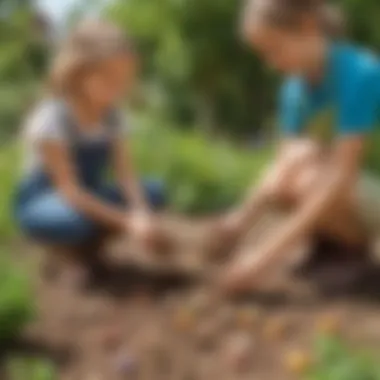
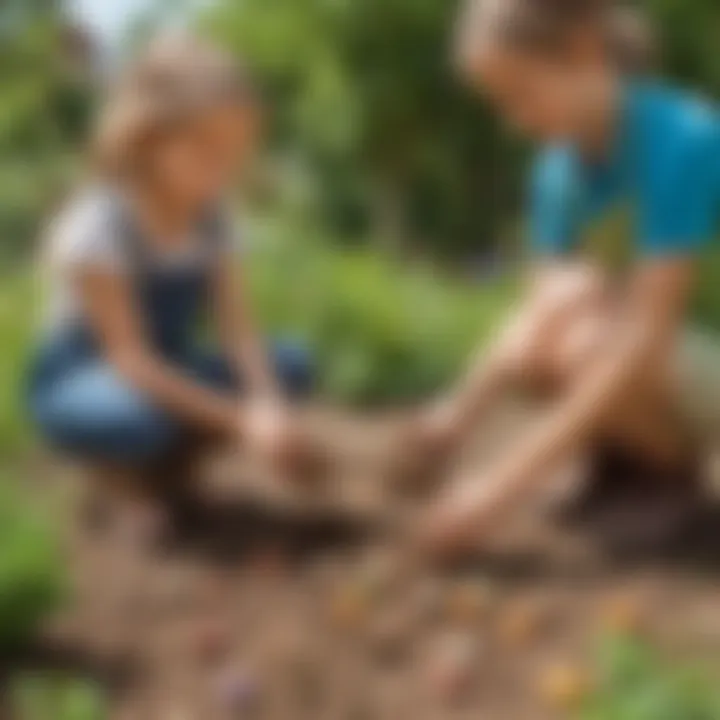
Water is a key ingredient in the process of making seed bombs, facilitating the mixing of seeds, clay, and compost into a cohesive mixture. It is important to add water gradually to achieve the right consistency without making the mixture too soggy or dry. Children can practice measuring and pouring water while observing how it interacts with the other materials to form the seed bombs. Understanding the role of water in plant growth and development can broaden their knowledge of basic botany concepts. Encourage kids to explore the importance of watering plants regularly to ensure they stay healthy and thrive in their environment.
Step-by-Step Guide
In this informative guide on crafting seed bombs, we will delve into the engaging and eco-friendly activity perfect for kids aged between 6-12. Making seed bombs is not only a fun experience but also a valuable lesson in sustainability and gardening. By following this step-by-step guide, children can actively participate in creating something that benefits the environment.
Select Seeds
Selecting the right seeds for your seed bombs is a crucial step in ensuring their success. Opt for native seeds that are well-suited to your local climate and soil conditions. Consider the types of plants you want to grow, whether they are flowers, herbs, or vegetables. It's essential to choose seeds that will thrive in the environment where you plan to plant the seed bombs, promoting biodiversity and supporting local ecosystems.
Mix Seeds with Clay
Mixing seeds with clay forms the foundation of a robust seed bomb. The clay acts as a protective coating for the seeds, shielding them from harsh weather conditions and potential predators. When combining the seeds with clay, ensure an even distribution to improve germination rates. The clay also provides the necessary weight for the seed bombs to be easily thrown or planted in desired areas, enriching barren spots with greenery.
Add Compost
Adding compost to your seed bombs enhances their nutrient content, providing essential nourishment for seed germination and initial plant growth. Compost enriches the soil and promotes the development of healthy roots, ensuring that the seeds have access to vital nutrients. Utilizing compost in seed bombs also contributes to sustainable practices by recycling organic waste and fostering healthier plant growth.
Form Seed Balls
Forming seed balls requires precision and care to create compact spheres that can withstand handling and dispersal. The shape and size of the seed balls impact how well they disintegrate upon contact with the soil, affecting seed dispersal and germination. Ensuring that the seed balls are well-formed increases their durability and effectiveness in spreading vegetation across different areas.
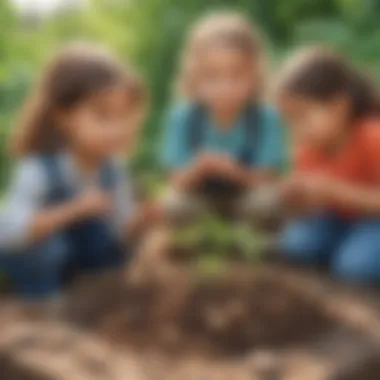
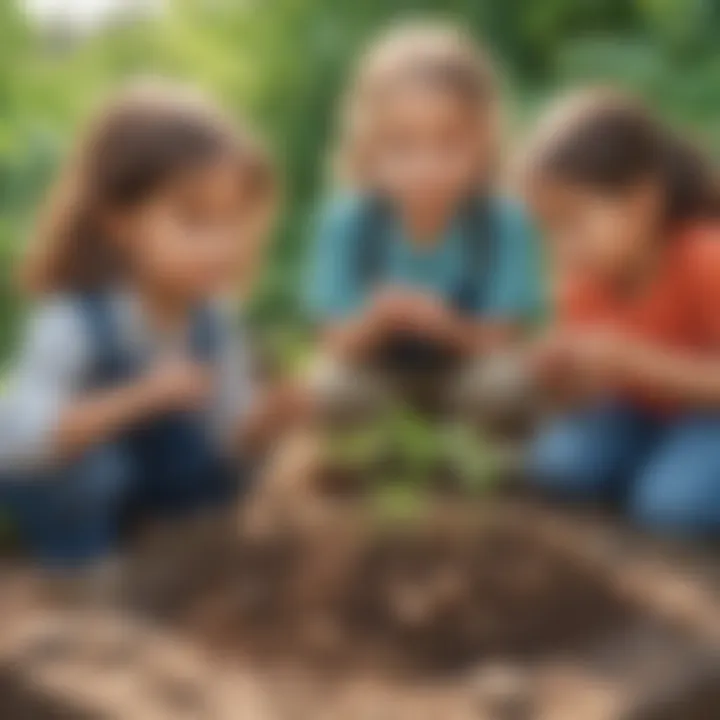
Allow to Dry
After forming the seed balls, allowing them to dry thoroughly is essential for maintaining their structural integrity. Drying enables the clay to harden, preserving the seeds within and preparing the seed bombs for storage or planting. Adequate drying time ensures that the seed balls are firm enough to withstand handling without compromising the seeds enclosed within.
Store or Plant
Once the seed bombs have dried completely, they are ready to be stored or planted. Storing seed bombs in a dry place helps maintain their quality and effectiveness before deployment. When planting the seed bombs, choose suitable locations that receive adequate sunlight and water. By following these steps, children can actively engage in promoting eco-friendly practices and fostering a love for sustainability.
Tips for Success
When engaging in the process of crafting seed bombs, there are key considerations that contribute to the success of this eco-friendly activity. By following these tips, you can ensure that your seed bombs effectively disperse seeds and support plant growth.
- Choose Native Seeds: Opting for native seeds is crucial for the success of your seed bombs. Native seeds are adapted to the local environment, increasing the likelihood of successful germination and plant establishment. Additionally, native plants play a vital role in supporting local ecosystems and biodiversity. Avoid using non-native seeds, as they may outcompete native species.
- Select Appropriate Season: The success of your seed bombs also depends on choosing the right season for planting. Planting seed bombs during the optimal season for seed germination improves the chances of seeds sprouting and developing into healthy plants. Consider factors such as temperature, rainfall, and daylight hours to determine the most suitable planting season for your seed bombs.
- Proper Storage: Storing your seed bombs in a dry place is essential to maintain their quality and viability. Excess moisture can cause premature germination or mold growth, reducing the effectiveness of the seed bombs. Store the seed bombs in a cool, dry location away from direct sunlight until you are ready to plant them.
Conclusion
In the realm of eco-friendly practices, the significance of creating seed bombs cannot be overstated. This engaging activity not only fosters a love for nature but also instills crucial lessons in sustainability and environmental stewardship among children. Crafting seed bombs serves as a gateway for young minds to comprehend the importance of biodiversity and the role each individual plays in preserving our planet's delicate ecosystem.
The benefits of engaging in crafting seed bombs are multifold. Firstly, it provides an interactive and hands-on experience that sparks curiosity and creativity in children. By actively participating in making seed bombs, kids develop a deeper connection with the natural world and gain appreciation for the efforts required to support plant growth. Moreover, this activity cultivates a sense of responsibility as children witness the direct impact of their actions on the environment. Through crafting seed bombs, youngsters learn about the life cycle of plants, the significance of soil health, and the essential role of pollinators in sustaining ecosystems.
When delving into the process of crafting seed bombs, certain considerations are paramount for a successful and enriching experience. It is crucial to emphasize the importance of choosing native seeds to enhance local biodiversity and support indigenous flora and fauna. Additionally, selecting the right season for planting seed bombs ensures optimal growing conditions for the seeds to germinate and thrive. Storing the seed bombs in a dry place post-formation is vital to maintain their integrity and viability, maximizing the chances of successful germination when planted. By incorporating these considerations into the crafting process, children not only create seed bombs but also cultivate a deep understanding of the interconnectedness of plant life and environmental conservation.
Encourage Eco-Friendly Practices
Promoting eco-friendly practices is essential in nurturing a sustainable future for generations to come. By engaging in activities like crafting seed bombs, children develop a heightened awareness of their role as stewards of the environment. Encouraging eco-friendly practices instills values of conservation, resourcefulness, and respect for nature in young individuals. Through the process of creating seed bombs, children witness firsthand the transformative power of small actions in making a positive impact on the environment.
One of the primary ways to encourage eco-friendly practices is to involve children in activities that promote environmental consciousness, such as gardening, recycling, and conservation efforts. By integrating these practices into everyday life, kids learn the value of reducing waste, conserving resources, and preserving the beauty of nature for future generations. Encouraging eco-friendly behaviors from a young age helps instill lifelong habits that contribute to a cleaner and greener planet.
Furthermore, engaging in eco-friendly practices fosters a sense of community and collective responsibility. By participating in sustainability initiatives like crafting seed bombs, children become part of a larger movement dedicated to protecting the environment. This sense of shared purpose empowers youngsters to make informed choices that prioritize environmental well-being and sustainability. Ultimately, by encouraging eco-friendly practices, we equip children with the knowledge and skills needed to become stewards of a healthier and more sustainable planet.







